Philippines can be a potential producer of cocoa. The climatic conditions and soil characteristics are conducive to growing cocoa. There is presently an increasing interest from local farmers because local and international demand for cocoa products is way beyond the production capacity of the country and world prices have been constantly favorable. With a positive attitude towards sustainable cacao production in the country, the Philippines can compete globally in the world’s supply of cocoa products.
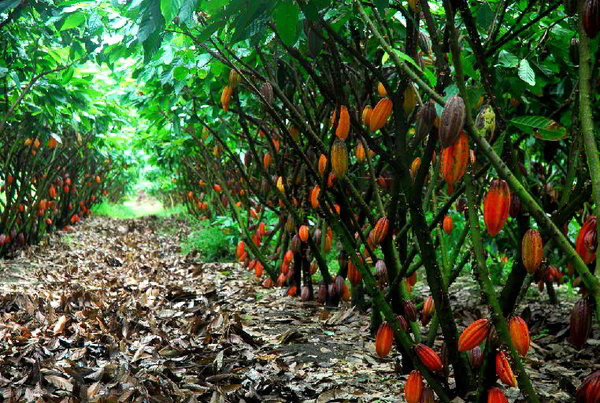
According to statistics, the country’s supply reached a deficit of 44,349 metric tons a year (2005) against local consumption. Production was then nearly 5000 metric tons in 2005. Local consumption then reached nearly 50,000 metric tons. There is indeed a large demand for local production of cocoa beans. With the present civil war happening in Ivory Coast which produces about 40% of the world’s cacao, major buyers (mostly from the US and Europe) are seeking alternate supply elsewhere. Cacao is considered an equatorial crop (crops that thrives well on regions occupying the equator), the Philippines has a great potential growing cacao.
Selection of Varieties
There are many varieties of cacao but the National Seed Industry Council has registered and approved only 9 varieties/clones of cacao. NSIC approved clones are the following:
Some of the nine varieties are as follows:
- BR25 (CC-99-05)
|
- ICS 40
|
- UIT 1 (CC-99-02)
|
- K 1
|
- K 2
|
- S5
- UF 18
Propagation and Nursery Establishment
In any crop, good production and income generation start with ensuring the best quality available for the variety of the crop being produced. Aside from choosing the variety, propagation techniques and nursery management will be described in this section.
Propagation by seeds
- Collect seeds only from ripe and healthy pods.
- Select seeds that are uniform in size. Discard seeds that are swollen and of different shape
- Select bigger seeds since the possibility high that they would produce vigorous and fast growing seedlings are high.
- Remove mucilage that covers the seeds by rubbing the seeds with sawdust or sand.
- Wash the seeds to effectively remove the mucilage.
- Cacao seeds are sensitive to fungal attacks and could lead to non-germination. It is best to soak cleaned seeds in fungicide solution for about 10 minutes. Follow strictly instructions indicated in labels.
- Spread the seeds on wet sacks and cover with wet newspaper for 24 hrs.
- Keep it moist but well ventilated to avoid formation of fungi.
- Start collecting seeds that show sign of germination (a pig tail-like root appears on one side). Usually, germination starts after two days.
- Sow the pre-germinated seeds not more than 1 cm deep in prepared polybags. Be sure seeds are sown with the pigtail-root pointed downwards.
- Use select 8″ x 10″ polybags. The soil must reach 2 to 3 cm from the top of the plastic bag.
- Potting medium
- mix completely composted organic materials to improve the soil characteristics such as water holding capacity, nutrient content and soil texture.
- If possible sterilize soil by boiling soil with water in drums or other convenient containers. In some cases, spraying formaline solutions also help sterilize soils. Cheapest way to sterilize soil is the use solar drying.
- Loamy to sandy loam soils are the most suitable medium in terms of physical property for raising seedlings.
- Liming is used for soils with less than pH 5
Nursery Establishment and Management
Nursery establishment for cacao seedling are similar to most tree crop nurseries. Young seedlings will require ample shading, constant supply of clean water and drainage. There are also other requirements written in the books but the ones stated here are general characteristics of nursery good for cacao seedlings.
- Choose site which are near roads so that new roads will not be necessary
- Choose flat grounds. Work area must not entail more effort from uneven ground work place.
- Availability of quality water sources like good water table for shallow wells, presence of irrigation canals or other natural water source like river or creeks. Also, free from saline waters.
- Free from water-logging and presence of nearby drainage facilities
- For cacao seedlings, shading material is a must. 0 to 2 month old seedlings require 70 to 80% shade. However, gradual removal of shading is recommended to prepare seedlings for field planting. Shading materials may use materials in the vicinity of the nursery itself. This is to avoid additional expenditures.
- The period of keeping the seedlings in the nursery affects the arrangement of the bags. Polybag arrangement must be systematically carried out to facilitate maintenance and grafting. Normally, a twin row with alternate path of 45 cm in width is recommended. In order to enhance the seedling growth and to avoid the seedling etiolation, the seedlings are usually spaced further apart from each other when the seedlings are 2 to 3 months old.
- The distance is 25 to 30 cm apart starting from the middle point of the polybag. The distance gradually increases when the seedlings are kept in the nursery for a longer period.
- Weeding: Weeds do not normally cause problems in the nursery and those that appear can be removed without much expenditure on labor. On the other hand, weeds growing along spaces in between the blocks may be controlled by cutting down with scythes. The use of herbicide is not recommended. Therefore weeding could be done manually or by mulching with available materials such as rice hull.
- Fertilizer application is carried out after the first leaf hardens and should be based on the result of soil analysis. If analysis is not available, incorporate 15-35 grams of diammonium phosphate (18-48-0) per bag depending on the size of polybag. The use of granular fertilizer is also done when the leaves are dry to avoid leaf scorching.
- Culling/Selection: To ensure uniform growth and development of the seedlings to be planted in the field, cull out the poor-growing seedlings in the nursery. This practice may be carried out by removing the bags containing seeds which did not germinate and small, crinkled seedlings.
- Transplanting: To reduce the seedling shock during transplanting, it is necessary to rotate the polybag to a few degrees one week before field planting. It is done for the seedlings whose leaves have hardened and especially for those which roots have penetrated the ground. Watering has to be done for a few days later. Field planting must be started at the onset of the rainy season. Unless irrigation is available, field planting during the dry season is not advisable.
Vegetative Propagation
Vegetative propagation gives more advantage in terms of reproduction of true-to-type trees, more uniform growth, early to bear flowers, and the clone perpetuates most if not all important characters of the original seedling mother tree like pod value, bean size, fruit wall thickness and others. Major consideration in vegetative propagation is the use of the selected varieties mentioned above.
Types of Vegetative Propagation
Patch Budding – This is the propagation of true-to-type trees using buds from any of the nine NSIC approved clones.
Nodal Grafting – Propagation on the sides of the seedling using nodes.
Conventional cleft grafting – This propagation technique is similar to the procedure used in grafting mangoes. Rootstocks are cut horizontally leaving only two leaves behind. Scion of selected variety is attached to rootstocks with an inverted V shape and fastened to each other using thin plastic sheet covering all wounds to prevent drying.
The success factors for all types of grafting and budding are:
- Use healthy bud wood with active buds
- Use budwood within 2 days of collection and store and transport in moist and cool conditions
- Do not collect bud wood from trees that are recovering from heavy cropping\
- Make sure bud wood is of right age and thickness for the rootstock
- Only use a sharp knife and keep it only for grafting or budding- nothing else.
- Clean knives and secateuers and other tools with alcohol, before and after grafting and budding, to minimise disease transfer
- Do not place tools onto the ground
- Avoid grafting in very hot and very dry periods, and also in very wet periods.
- Make sure rootstock are the right age and condition for grafting and budding
- Manage shade and water very carefully
- Make a secure and evenly shaded nursery.
Planting and Farm Establishment
Soil Requirement
- Best soil is made-up of aggregated clay or loamy sand with 50% sand, 30-40% clay, and 10-20% silt.
- Deep soil, about 150 cm, highly favors the growth of cacao.
- pH = 5.0 to 6.5
Climatic Requirement
- Ideal rainfall for cacao cultivation ranges from 1250 to 3000 mm per annum, preferably 1500-2000 mm with dry season of not more than 3 months.
- Temperature ideal for cacao lies between a mean maximum of 30-32°C and mean minimum of 18°C.
- Altitude of the area should lie between 300-1200 meters above sea level. Suitable temperature is generally found in an altitude up to 700 m.
- Cacao thrives best in areas under Type IV climate which has an evenly distributed rainfall throughout the year.
Establishment of Shade Crops
The leaves of the cocoa seedlings are tender and will be burnt by direct sunlight. Therefore, in order to protect them and ensure their survival and health, the seedlings must be shaded from direct sunlight during the first few years. Direct sunlight shuts off the ability of cocoa leaves to produce carbohydrates through photosynthesis. Carbohydrate is the source of energy for growth. If no energy is produced, the tree cannot grow or produce cocoa pods.
Only older cocoa trees can survive the direct rays of the sun. The upper leaves, which receive direct sunlight, shade the lower leaves that provide energy for the tree and the cocoa fruit to grow. However, if there is too much shade, cocoa leaves cannot perform photosynthesis and there is no energy for growth.
Newly planted cocoa trees need 75% shade (25% direct sunlight overall) during their first year. This can be reduced to a 50% level of overall shade in their second year. After that, the pod bearing cocoa trees need to be shaded only about 25% density of direct sunlight for the rest of the cocoa tree’s life span.
Permanent shade crops that have a thin canopy, tall trunk and do not defoliate seasonally are ideal to intercrop with cocoa trees for long periods. Some suitable crop bearing varieties are coconut, cashew, longan, durian, mango and mangosteen. Both cacao and shade trees can be planted as in picture below.

In the case that shade crops (both temporary and permanent) do not create enough shade for cocoa seedlings growth, temporary structures can be made from other, easily available materials such as palm fronds, sugar cane leaf, and etc.
| NAME | Filipino or common name |
| 1. PERMANENT SHADE PLANTS | |
| Leuceana | Ipil-ipil |
| Gliricidia | Madre de cacao (suitable pepper production) |
| Jackfruit | Langka |
| Lansones | Lansones |
| Marang | Marang |
| Durian | Durian |
| Cashew | Kasoy |
| Mango | Mangga |
| Longan | Longgan |
| Pomelo | Pomelo |
| Coconut | Niyog |
| 2. TEMPORARY SHADE PLANTS (fast growing) | |
| Sesbania | Sesbania |
| Crotalaria | Crotalaria |
| Flemingia | Flemingia |
| Cassava | Kamoteng kahoy or Balanghoy |
| Maize | Mais |
| Ginger | Luya |
| Abaca | Abaca |
| Papaya | Papaya |
| 3. VINES | |
| Pepper –black | Paminta |
| Dragon fruit | Dragon fruit |
| Vanilla | Vanilla |
| 4. GROUND COVERS AND MANURE CROPS | |
| Lemon grass | Tanglad |
| Peanut | Mani |
| Sweet potato | Kamote |
Staking and Spacing
- Planting points are to be marked with stakes using suitable size and length of cable wire or guide from straight line planting.
- Most common distance :
- High density 1.5 to 2.0 x 6.0 m = 2,300 trees/ha. Double hedge row
- Low density = 3 x 2m = 1666 plants/ha or 2.5 x 2.5 m = 1600 plants/ha
- Depending on the shade from existing trees and tree crops, and soil fertility, the planting density of cocoa varies from 400-1100 plants/ha. In the case of intercropping in coconut and cashew, the density of cocoa averages about 600 plants/ha. Basal fertilizers are very important to enhance the growth of young cocoa trees in the establishment stage.
Planting
- Right time to plant is during early morning or late afternoon.
- It is not advisable to plant seedling with young and soft flush leaves as they are susceptible to sunburn, planting shocks or stress.
- Best season to plant in the field is during the onset of rainy season.
- Size of the hole should be big enough to accommodate the ball of the soil mass.
- Normally, a hole of 30 cm wide x 30 cm long and 30 cm deep.
- In holing, the surface of soil should be separated from the sub-soil.
Care and Maintenance
Weeding
Manual by ring weeding method 1 meter radius from the stem as removed with the use of sickle.
Fertilization
In the absence of soil analysis (PCARRD, 1989) recommended rates of fertilizer application for various ages of trees as shown below.
Months after field planting | FERTILIZER APPLICATION/PLANT (g) | ||
N | P | K | |
| 1 | 6.4 | 6.4 | 6.4 |
| 4 | 8.5 | 8.5 | 8.5 |
| 8 | 8.5 | 8.5 | 8.5 |
| 12 | 12.8 | 12.8 | 12.8 |
| 18 | 17.0 | 17.0 | 17.0 |
| 24 | 27.0 | 27.3 | 38.5 |
| TOTAL | 80.5 | 80.5 | 91.7 |
Pruning
Pruning is done to increase cacao production
- Reduce pest and diseases infestation
- Control the shape and height of the tree
- Control the shape and height of the tree, to ensure easy access for harvesting.
Steps
| |
| |
| |
|
Rehabilitation of Old Cacao Trees by Side Grafting
Rehabilitation can be carried out by removal or replacement of the existing unproductive trees: through side grafting or through bark grafting. Side grafting involves the utilization of scions from plants known for high yield and quality beans to be side grafted to existing unproductive trees in the plantation.
- Steps in Side Grafting
- Find the hard leaf flush from “super trees”.
- Prepare budsticks for side grafting.
- Close-up of prepared budsticks.
- Make first horizontal deep cut on the main trunk of unproductive tree.
- Shave bark downward into the cut.
- Make sure original cut is through the bark to the white wood inside.
- Make two cuts downward from the horizontal cut.
- Create “window” by peeling the bark neatly and cleanly downward to reveal the white sapwood (cambium) inside.
- Insert budstick into window as illustrated
- Tie window closed with straw (younger tree).
- Here, graft is tied securely with straw (older tree).
- Cover side graft with plastic bag and tie tightly against the tree with raffia. Remove plastic bag after one month.
- Another younger tree with side graft covered with plastic bag and tied tightly against the tree with raffia. Remove plastic bag after one month.
- Repeat the same steps for the 2nd and 3rd. Each tree should have three grafts to begin with. Be sure each graft are at least 30 cms apart and opposite each other.
- Cut the main tree with chainsaw at least 1 foot above the ground in a slanting manner.
- Apply Tar or paint on the cut portion
- Ringweed the stump 1 ft. around and and apply animal manure or organic fertilizer in the stump holes.
- Apply organic fertilizer and control pest & diseases regularly.
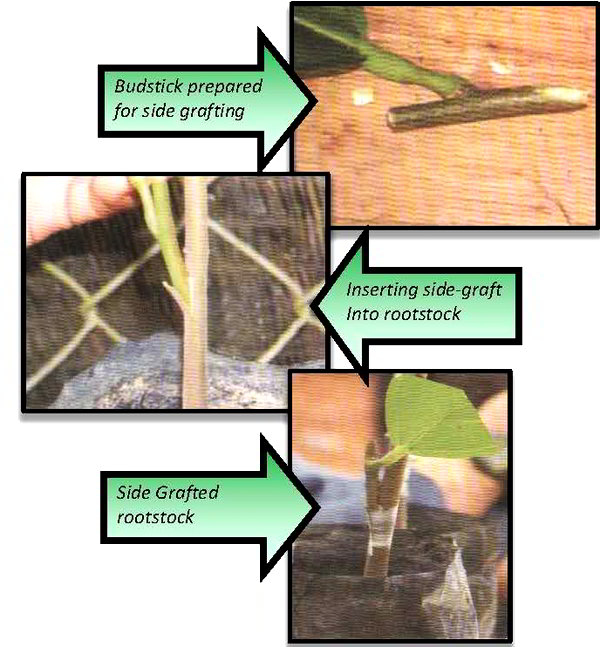
Pest and Disease Management
Most common cacao pests in the Philippines are: Cacao Pod Borer, Vascular Streak Dieback, Helopeltis and Cacao Stem Borer. Whereas, the most common cacao disease is Black Pod.
- Cacao Pod Borer (Conopormorpha cramelerella)
- Regular harvesting (weekly harvesting of all ripe pods) in order to break the lifecycle of the pest.
- Sanitation; which includes to bury all empty cacao pod husks, but also to remove all other diseased pods, black pods, and pods eaten by animals from the trees
- Pruning; to increase the sunlight, which the pest does not favor.
- Bagging or sleeving of the young pods with newspaper and stapler (or plastic bag)
- Fertilizer; to increase the general health of the tree and in addition increasing cacao production.
- Vascular Streak Dieback (caused by Oncobasidium theobromae)
- Sanitation pruning – cut off infected branches at 30 cm below the infected area, and burn the infested cuttings
- Nurseries should use polyethylene roofing to ensure spores cannot land on the seedlings
- Shade on the cacao trees should be reduced to lower humidity
- Plant VSD tolerant varieties such as hybrids PA 173 x SCA 9, PA 138 x SCA 9, ICS 39 x SCA 6, PA 156 x IMC 67, PA 156 x SCA 9, ICS 95 x SCA 6, clones PBC 123, PBC 159, ICS 95 and others.
- Black Pod Rot and Canker Control Method (caused by Phytophtora palmivora)
- Frequent harvesting to avoid pathogen sporulation.
- Harvest all the infested, dead and mummified pods and ideally destroy or bury them.
- Prune the cacao trees and shade trees to reduce humidity.
- Have a good drainage system so that the spores cannot spread in puddles of water.
- Trees that have died due to tree canker should be cut down and destroyed.
- Scraping off the bark from the infected area and put paint or soap on it.
- Helopeltis Control method (Helopeltis: a sap-sucking bud)
- Typically, Helopeltis likes open canopies and sunlight penetration. Still, one should prune the trees carefully and reduce shade if it is too heavy – this is to allow better visibility on the disease and better application of control methods. (Note: if pruning is too rigorous, new chupons will grow which are a feeding ground for Helopeltis).
- General sanitation of farm
- Regular harvesting
- Stem Borer Control Method (Zeuzera)
- Cut off infested braches at 40 cm below the lowest larvae hole. These branches should be destroyed.
- After pruning of an infested tree, big branches, especially those with stem borer holes, should be burned.
- The hole can be covered or plugged with mud or wood to prevent the larva to come out, so that it cannot feed and hatch, or cannot breathe.
- Poking the larvae out with a piece of wire.
- Squirt some soap solution in the exit hole. After a while, the larva will emerge from the hole, probably driven out by the unpleasant soap fume. Catch and kill the Stem Borer.
Other Pest and Disease
Leaf Eater Damage
Cause: Insects such as caterpillars, cocoa loopers, grasshoppers, locusts, leaf cutting ants, leaf beetles.
Solution: Chemical control is effective. Shade management is also important. Some shade trees such as Leucaena are often associated with more caterpillar problems. Open sunny conditions attract locusts and grasshoppers. Red weaver ants may be effective in controlling leaf beetles.
Leaf eater damage
Cause: Insects. Possibly Rhyparid beetle.
Solution: Chemical control, or biological with crazy ant. Control with light traps is also possible.
BLISTERS and BLACK SPOTS
Sap suckers on young leaves
Cause: Insect such as thrips, aphids, leaf hoppers and pysillids.
Solution: Chemical control. Take care to spray underneath the leaves as well as on top.
Insect sap suckers
Cause: Thrips or aphids.
Solution: Control with chemicals and shade management. Target spraying to affected plants only. Thrips have natural enemies such as pirate bugs watch out for them and avoid spraying them.
Harvest Management
Pod harvesting
Don’t harvest green pods and avoid over ripe pods because bean size and quality will be reduced. Use secateurs to harvest cleanly and safely, to protect flowering cushions
Pod storage
We should collect pods and store for 7 – 9 days for quicker fermentation and better flavor of cocoa beans.
Pod opening and bean removal
The best way is to use a non-sharpened steel blade to crack the pod then twist the pod open. You can also use a wooden hammer or crack two pods together.
Discard the placenta, pulp and soft or empty beans, germinated beans and damaged beans from the bean mass.
Correct pod disposal is important to avoid pest and disease buildup. The safest ways are composting or burying after drying. Avoid leaving pod husks on the ground, as insects and diseases can spread from these pods.
Bean fermentation
During cocoa bean fermentation, it is important to:
- Turn the bean mass after 2 days (48 hours) and 4 days (96 hours)
- Drain the juices (sweatings) from the bean mass
- Only use properly constructed wooden boxes with slats, or baskets
- Cover the beans with banana leaves and jute bags or cloth rags
- Fermentation will be completed in about 5- 6 days
- All mixing of beans should be made by wooden tools or hands
Bean drying
Once the beans have been fermented they must be dried immediately under the sun on drying trays or baskets turned regularly. It is important to:
- Cover with plastic shelters during rain or remove the beans to a dry spot.
- During drying separate bean clusters, remove pod placenta, and flat, damaged or germinated beans.
| Avoid using wood fired kilns that produce smoke- this is not an approved drying method and will result in smoke contaminated cocoa! |
Bagging and storage
Keep bags of beans on a wooden palette in a dry and ventilated place. Don’t put hot beans into plastic bags to avoid mould and moisture increased.
Record keeping.
Record all weight of pods harvested, wet bean fermented, beans dried in a record book, and dates of harvest, fermentation and drying.
References:
“Sustainable Cacao Production” Production Technology Manual. Cocoa Foundation of the Philippines, Inc. (CocoaPhil)
Lecture Presentations prepared by Dr. Romulo Cena, Professor II and Plant Breeder, University of Southern Mindanao and Ms. Ludivina Dumaya, Assistant Coordinator, IPM Regional Program DA Region 12 and Dr. Nicolas Richards, Chief of Staff, SUCCESS Alliance Program of the Philippines, USDA as presented during the Training of Trainors’ held at Malagos Resort, Davao City April 2007 and Bulwagang Princesa, Puerto Princesa, Palawan May, 2007
Lecture Presentations prepared by Dr. Nicolas Richards, Chief of Staff, SUCCESS Alliance Program of the Philippines, USDA as presented during the Nursery Establishment and Maintenance for Cacao Growers Training held March 29-30, 2007
Source: bar.gov.ph
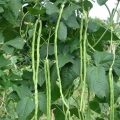

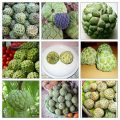

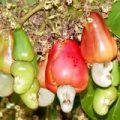
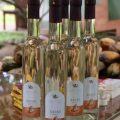

Sir, do you offer training on cocoa farming?
I am from Negros Occidental and I decided to plant cacao on my 75 birthday so that I can see it fruiting when I am 80 ha ha ha. I had been searching the elusive Holy Grail of the cacao bean….White Bean cacao or criollo. Lo and behold found it and was able to get scions from a 30 years old tree and i will have a thousand seedlings to be planted in September.. I know that is not the best producing cacao but it is the best according to what I read…so nothing but the best for an old lady like me.If you have any seed that you can sell me. Happy to hear from you. Thanks for your time to listen.
dito ako sa abroad…san ba pwede makaseminar nito…ito balak ko
Believed me, there's money in planting cacao….
we will try cacao farming here in zamboanga city high land areas.
Ano po ba an recommended insecticide para sa Rose beetle at Rhyparid beetle?
san po makakabili ng mga seeds
its ok of planting cacao intercrop in oil palm?
nice one….
where can we market our cacao products?
Gusto ko n magstart ng cacao farm!
pwede po ba mag invite sa pagpapaseminar ng cacao
its good
educational for cacao farmers.